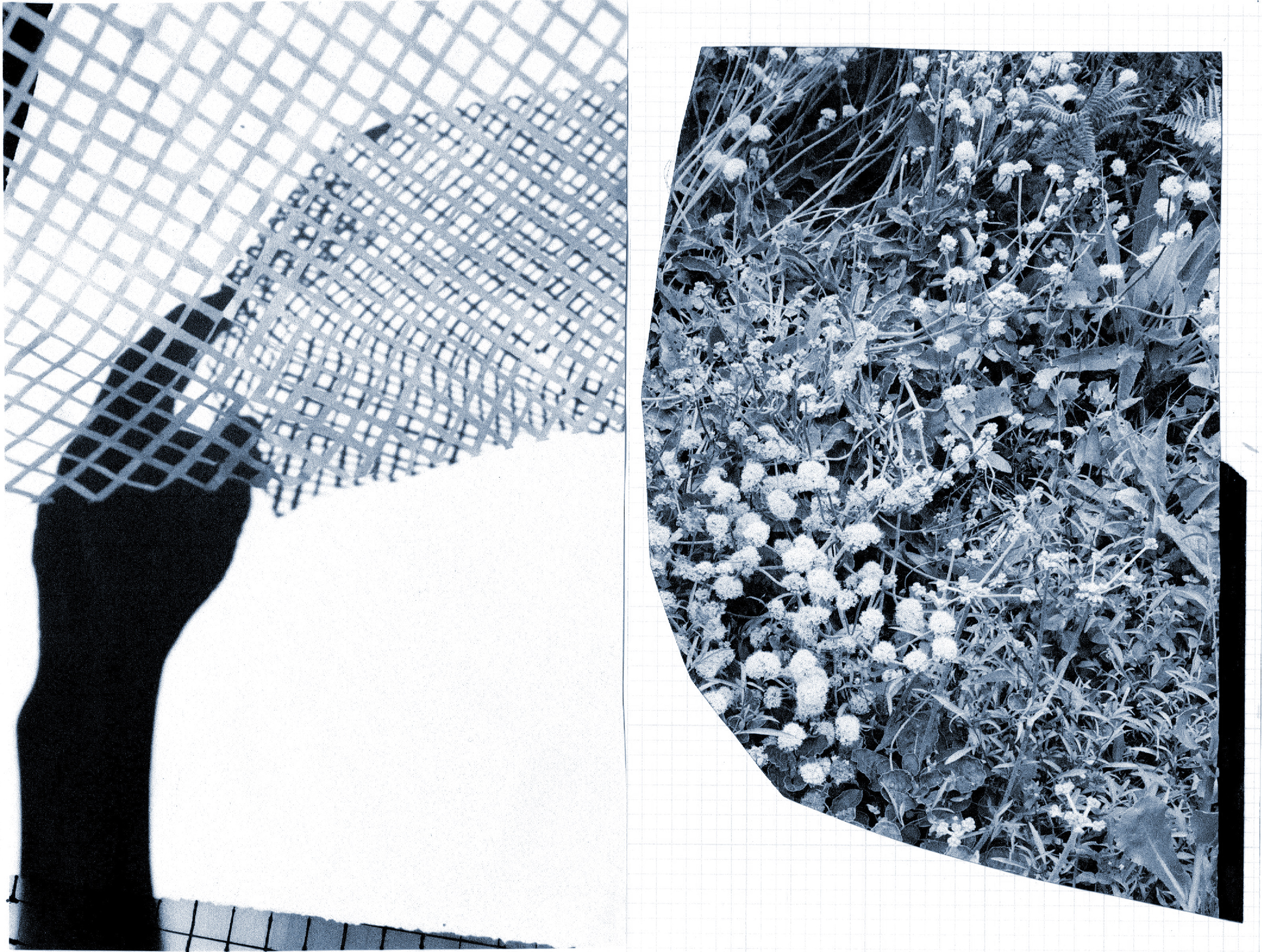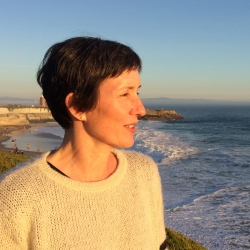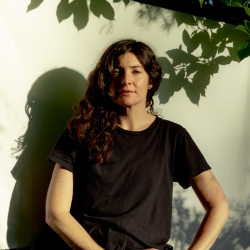ART 470: The Mobile Studio: Creative Research in the Outdoors
Dates: July 7-12, 2024
Instructor: Susan Belau
Fee: $395.00
Units: 1
Term: Summer 2024
Class Number: 1966 Section Number: 01Z
Course Description
This class immerses participants in the beautiful Sierra Lakes Basin region to create an unbound artist book. Throughout the 5-day class, we examine nature firsthand and explore how visual works can respond to and reflect place and landscape. Working observationally and conceptually, projects encourage experimentation and incorporate drawing, watercolor, cyanotype and collage.
The emphasis of this class is to foster curiosity, attentiveness, and art making as a process rather than a fixed form. Workshop time includes independent work, responding to daily prompts, engaging in writing exercises, and participating in group critiques and discussions. We will be working at different sites in the area to record observations and ideas. This field work is complemented with sessions of cyanotype exposure and processing, collage, and constructing the folio for the unbound artist book. The class includes short readings and examples of contemporary artists engaged with ideas of landscape and nature.
Open to artists of all levels, this 1-unit class is a unique opportunity to build an art practice that extends outside of the studio.


Instructor Bio
Susan Belau is a San Francisco based artist working in printmaking and drawing. Her studio practice centers on the poetics of space, perception, and the relationship between place and human feeling. Belau received her B.A. in Studio Art from University of California, Santa Cruz, and M.F.A. in Printmaking from University of Nebraska-Lincoln. She is currently a Professor of Art at San Francisco State University. Belau has received the Phelan Award for Excellence in Printmaking and been awarded fellowships at Kala Art Institute, Berkeley, California and Women’s Studio Workshop, Rosendale, New York. Her work is in private and public collections throughout the United States, including University of the Arts, Philadelphia, the Ford Foundation, and the Fine Arts Museums of San Francisco.

Co-instructor Bio
Leah Koransky (b. Chicago, IL) is a Berkeley-based artist working between photography, collage, printmaking, sculpture, painting, and design. She uses light, color, and form to explore the relationship between place and self. Her work has been featured in exhibitions across the US, including The Future Perfect in Brooklyn, NY, form & concept, Santa Fe, and the Berkeley Art Center. In 2020, she co-founded Deep Time Press︎, an independent publishing imprint centered on time and place. She holds a BFA from California College of the Arts and an MFA from San Francisco State University. She was awarded the 2023 Leo D. Stillwell Jr. Scholarship and a 2023 Murphy and Cadogan Award. Leah has taught at UC Berkeley and California College of the Arts and has been awarded residencies at the School of Visual Arts and Mildred’s Lane.
Course Details
Course Schedule
Arrive Sunday afternoon for set-up, dinner (6pm) and evening orientation/introductions.
Monday – Thursday 9am - 4pm, Friday 9am – 1pm.
Plus 3 evenings of discussion/activities
Each day we will travel off campus, which requires driving/carpooling and easy to moderate hiking.
Course Materials
- Participants are encouraged to bring drawing materials of their choice – please be aware that we will be working in the field, so portability, ease of use and containment of waste are important to consider.
- The book folios will be designed for 9 x 12-inch paper size or smaller.
- Some materials, such as paper for book folio and cyanotype will be prepared ahead of the workshop and ready to use once we need them. Please bring $25 to cover these additional materials.
- Listed below are suggested materials, please contact instructor for specific recommendations of brands or suppliers
Drawing:
- Pencils, 2H, HB, 2B, 4B
- pencil sharpener
- white eraser
- Ink pen – can be ballpoint, micron pens, or a calligraphy pen (such as Itoya Doubleheader Calligraphy Marker – Black)
- optional – colored pencils
Wet media:
- Participants are encouraged to work with either watercolor or ink washes. This is not a watercolor intensive class, so I recommend you work with what you are familiar with, or start with a small set of colors.
- watercolors in a portable tray with space for mixing color and a lid for easy transport (such as Daniel Smith Watercolor Half Pan Sets - Metal Box, Set of 12 Colors)
- any black or brown ink – india ink or sumi ink
- watercolor brushes, assorted sizes (such as #00 round, #6 round, 1-inch flat)
- Water brush – medium or large (such as Pentel or Sakura Koi)
Paper:
- 9 x 12-inch drawing paper pad, 25 – 50 sheets
- 9 x 12-inch or smaller pad of watercolor or mixed media paper, 15-20 sheets (such as Fabriano Studio Watercolor Pad, 300 gsm, Hot Press)
- additional small sketchbook/notebook, for writing and sketches
- Optional -- assorted papers for drawing, such as graph paper, newsprint, tracing paper, colored papers, pre-printed papers. Papers can be folded to fit within the 9 x 12-inch book folio.
Good to have:
- Scissors
- exacto knife
- ruler
- small, lightweight board/folio (chip-board or foam core) for keeping loose papers and using as a drawing support in the field
- Small mixing containers to hold ink and water
- Foam pad, folding stool, or whatever you need to draw outdoors comfortably.
Lodging and Camping Supplies
Camping gear if you are staying on campus:
- tent and sleeping pad (unless you are staying in our tent with a cot provided)
- warm sleeping bag
- pillow, toiletries, and towel
- flashlight and lantern
- alarm clock
Field gear for everyone:
- day pack
- sunscreen and lipbalm
- sun hat
- insect repellant
- water bottles
- plastic containers for packed lunches
- sense of humor
You might also want to bring:
- camera
- binoculars
- hand lens
- camp chair
Clothing:
The weather in the Sierra Nevada can vary greatly, even in a single day. Be prepared for chilly temperatures at night, even below freezing early in the summer. Rain is a possibility any time, whether forecast or not. Variable weather clothing that can be layered is best: long pants and a long-sleeved shirt, warm sweater and jacket, t-shirt and shorts or skirt, sturdy shoes or hiking boots, sun hat, rain gear, and a warm hat or gloves for cold weather and/or night activities. And, if you come later in the season, bring your swimsuit for afternoon dips in the lakes!